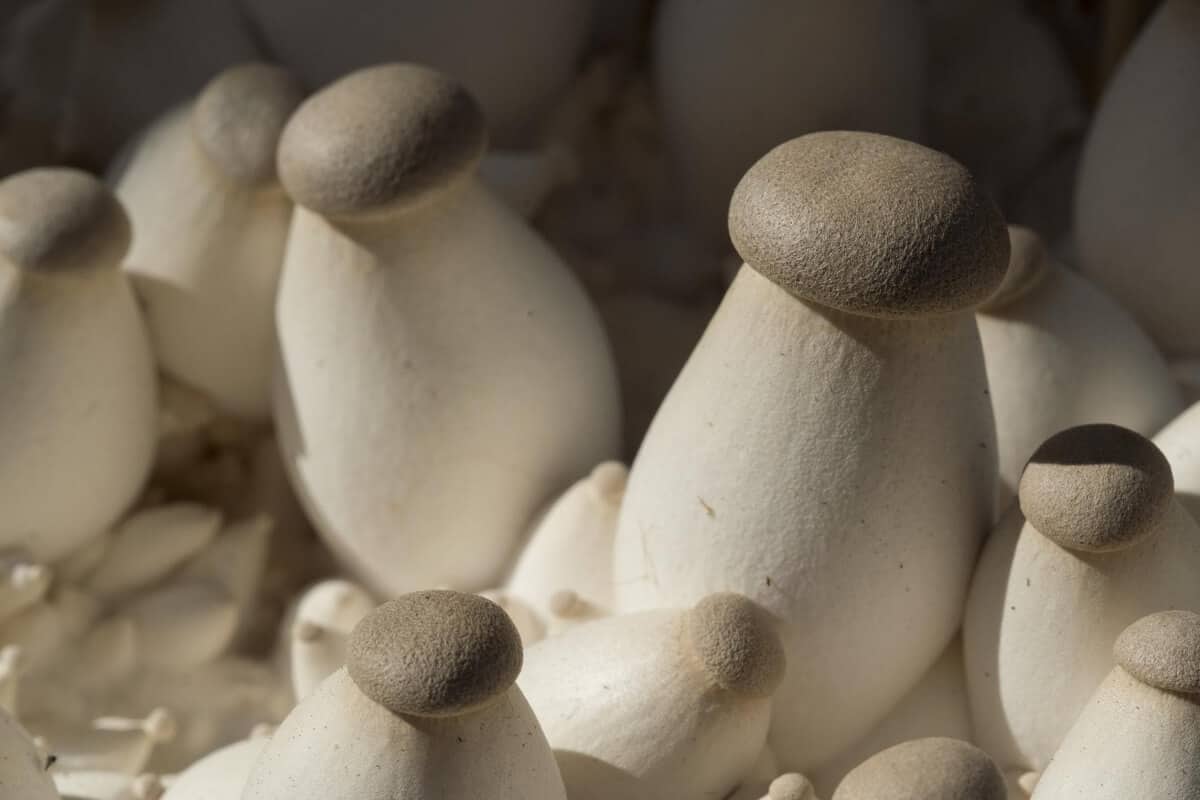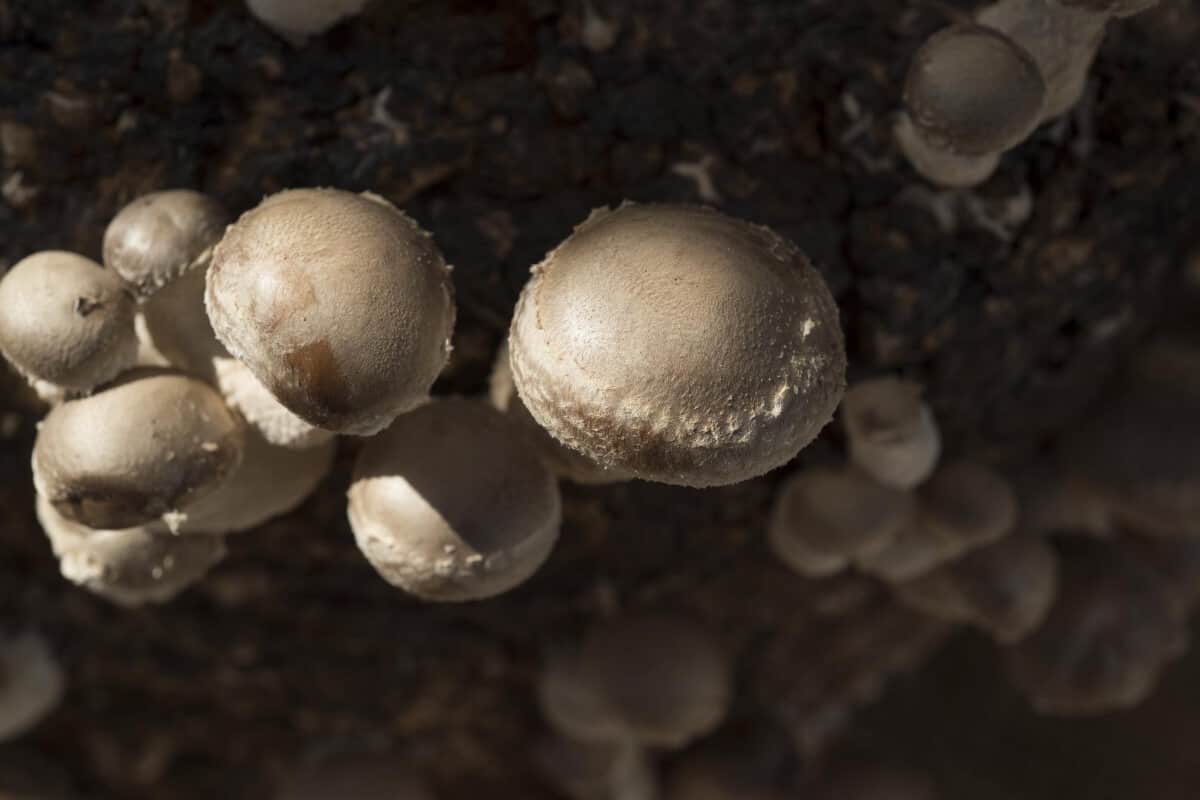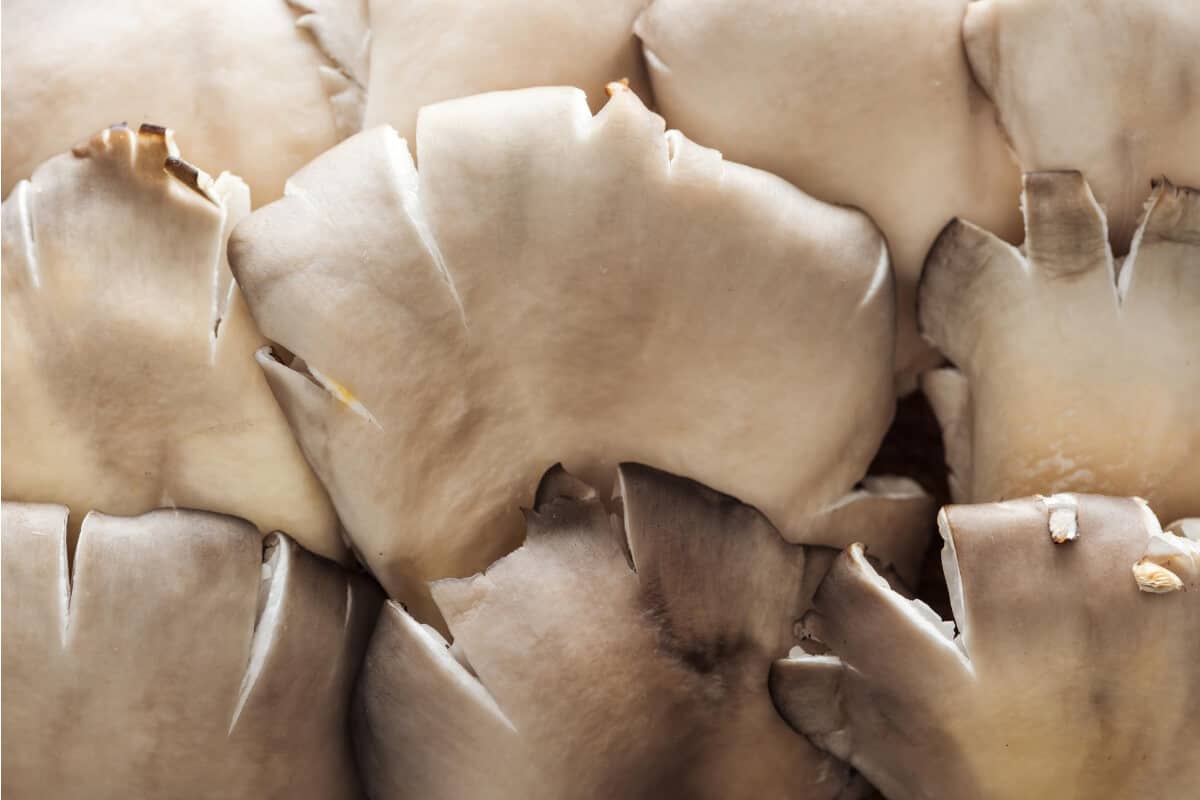Did you know that is possible to grow mushrooms using a hydroponic system?
Hydroponics is a rapidly growing method for cultivating mushrooms in both home and hydroponic gardens.
Growing mushrooms using hydroponics is a simple process that can be completed in just a few steps, despite common misconceptions about its complexity.
Prior knowledge is necessary in order to successfully cultivate your preferred fungi in a hydroponic gardening center.
- Related article: Easy Plants to Grow in Hydroponics
We’ll explain everything you need to know about growing mushrooms and how to start a hydroponic mushroom garden—from its life cycle, and its benefits, to the equipment you need to get started!
Why Grow Hydroponic Mushrooms?

Benefits of Growing Hydroponic Mushroom
- Growing mushrooms in hydroponics will improve your average yield of fresh mushrooms.
- Reduction in the number of pests compared to soil farming.
- Avoids diseases that are present in the soil.
- You don’t need large areas to hydroponically cultivate huge quantities of mushrooms.
- Mushrooms that are grown in hydroponics taste better and are larger in size.
- Hydroponics creates the ideal environment, and your mushrooms will grow faster.
Drawbacks of Growing Hydroponic Mushrooms
- Requires some preparation as all equipment must be sterilized before cultivation can begin.
- Mold and mildew thrive in high humidity conditions, and the dampness that is provided for mushrooms can easily become infected with mold.
Equipment Needed to Grow Hydroponic Mushrooms
Mushrooms grow best in a humid environment. They don’t require large amounts of light to grow, unlike plants that photosynthesize.
The basic equipment, and some optional accessories, needed for growing fresh mushrooms in hydroponics are:
- Small T5 grow light – A type of fluorescent lighting fixture that is designed for indoor plant growth. It is known for producing more light per watt than other types of fluorescent lights and has a longer lifespan and higher efficiency than traditional grow lights.
- pH tester – A tool utilized to measure the acidity or alkalinity of a solution, commonly employed in monitoring and adjusting nutrient solution pH levels for optimal plant growth.
- Fan – A fan is used in hydroponic growing to increase air circulation and help distribute CO2 evenly throughout the growing space.
- Optional heater – A water heater is an electrical device that is frequently used to maintain the optimal temperature for plant growth.
- Humidifier – A tool that increases the humidity levels of an environment by releasing water vapor into the air.
- Grow trays – Utilized as shallow containers to hold a substrate and provide a means for plants’ roots to access water, oxygen, and nutrients.
- Plant containers – Plant containers are usually watertight vessels that hold the nutrient solution and growing medium needed to cultivate plants without soil.
- Air Pump with Air Stone Attachment – A device used to aerate nutrient solutions in hydroponic systems. The air stone attachment provides oxygen to the roots of plants while the air pump pushes and circulates the nutrient-enriched water solution throughout the system, which promotes healthy plant growth.
How to Grow Hydroponic Mushrooms

Choose the Varieties of Mushrooms to Grow
Mushroom species need moisture to grow well because are a type of Fungai.
Various species and types of mushrooms are cultivated through hydroponics, although certain types are more widely recognized due to their exceptional growth.
The following types of edible mushrooms have been found to thrive in hydroponic environments:
- Shiitake Mushrooms – A type of mushroom with a tan to dark-brown cap and white stem. They are known for their meaty texture and strong, smoky flavor, and are commonly used in many dishes.
- Cinnamon Cap Mushrooms – A variety of edible fungus with reddish-brown caps, white gills underneath, and a unique taste reminiscent of cinnamon.
- Button Mushrooms – A type of edible mushroom characterized by a brown or white cap, short and thin stems, and a mild, slightly nutty taste.
- Enokitake Mushrooms – A variety of edible mushrooms that are thin, white, with long stems and small caps, and have a mild, sweet flavor and crunchy texture.
- Maitake Mushrooms – An edible mushroom that is also known as hen of the woods with a fan-like shape and overlapping caps, which have a rich and savory flavor.
- Oyster Mushrooms – A type of edible mushroom with a mild, slightly sweet taste and an umbrella-like shape with a soft, velvety texture and white to grayish color.
- Lion’s Mane Mushrooms – An edible mushroom that has white, shaggy clusters of spines rather than gills and a mild, seafood-like flavor.
Choose the Hydroponic Technique
The term hydroponics refers to a soil-less cultivation system that uses water in the process to grow plants.
Mushrooms don’t have roots, therefore, it’s difficult to cultivate mushrooms through a standard hydroponic system.
However, it can still thrive in a soil-less hydroponic media as the nutrient that you will provide will be your mushrooms’ primary source of food.
The best soil-less technique to grow mushrooms is through a hydroponic mushroom kit.
These hydroponic mushroom kits require you to submerge a substrate in cold inches of water for a few hours, then place the substrate in a dark spot and humid environment and leave it for a few days.
Mushrooms will begin to sprout and after harvesting the mushrooms, you must place the same substrate in cold water to allow it to be damp.
The same substrate will reproduce mushrooms for a second yield.
Growing mushrooms from scratch is also possible by growing them from spores.
It is a relatively easy process that requires minimal gardening supplies and equipment, though it can be somewhat time-consuming.
This process requires the liquid mycelium from pieces of mushroom or a culture purchased from a Culture Bank.
Once the mycelium is strong enough to support a mushroom reproductive cycle, it is transferred to seed or grain, it will turn to spores, then will develop fungus after a couple of weeks.
Light and Temperature Conditions
The suitable temperature that works best for your mushroom spores to germinate is 24-27°C so it’s best to grow it in a cool spot.
Mushrooms are fungi and require high levels of humidity. Set your humidity gauge to 90% as being able to provide high levels of humidity is essential.
Additionally, mushrooms only need modest amounts of daily light to grow. Just indirect light for 5-6 hours daily works best for this fungus.
Water and pH Levels
The ideal pH range for cultivating mushrooms is between 5.5-6.5, as the mycelium tends to thrive in slightly acidic water.
Mushrooms prefer cold water. The ideal way to grow hydroponic mushrooms faster is to let a sawdust block rest in cold and non-chlorinated water, or chilled water, for a few hours, with the water temperature ranging from 16°C to 24°C.
Growing Medium
Coco Coir would be the best-growing medium for mushrooms. The substrate that is ideal to be used for growing various types of fungi is made from coconut shell husks.
Coco Coir also possesses a notable water-retention capacity, making it an optimal choice for maintaining the moisture and well-being of mushrooms.
The substrate’s lightweight design allows for easy movement as necessary.
However, there exist alternative growing mediums that are also suitable for cultivating mushrooms within a hydroponic system.
Some of the alternative growing mediums that can be used are:
- Rockwool – A growing medium composed of melted and spun rock, typically basalt or diabase, that can retain significant amounts of water while also enabling air to circulate around plant roots.
- Vermiculite – A substrate that is made from volcanic rock. It is known for being lightweight, having a high water-holding capacity, and providing excellent aeration and drainage for plants.
- Peat Moss – A horticultural material that is created by decomposing plant matter. It is recognized for its exceptional properties, including water retention, aeration, and drainage, which promote plant growth.
- Sawdust – A growing medium that consists of wood particles such as sawdust, wood chips, or wood shavings that are mixed with water and nutrients to provide an ideal environment for mycelium growth.
Mushrooms will need a substrate that they can colonize, which makes using growing mediums like Clay Pellets not ideal.
Nutrient Solution
In a hydroponic system, nutrients are added to the water to provide plants with the necessary nutrients.
Mushrooms do not have roots, which prevents them from absorbing water solutions enriched with nutrients.
Mushroom spores are injected into a substrate and the mycelium will begin to develop.
The growing medium that the mycelium is living in must be able to provide and be their source of nutrients so they can sprout into mushrooms.
The nutrients that the mycelium requires to grow is a form of carbohydrates or sugar, carbon, and nitrogen.
The growing medium like vermiculite cake can be mixed with organic materials such as brown rice flour and water.
The proper nutrients that are provided in the growing substrate will allow them to sprout into mushrooms.
Propagating the Plants
A mushroom seed is called a spore. Spores can be bought and injected into substrates that will turn into mycelium.
The process of mycelium bunching up together is called primordia, which is what causes mushrooms to sprout.
Propagating mushrooms in hydroponics can be done by using the stems of mushrooms as the mycelium and primordia are found in the stems of harvested mushrooms.
Propagating the stems of harvested mushrooms in a substrate will cause the mycelium to grow.
Harvesting the Mushrooms
Did you know that the actual mushroom you harvest is actually the reproductive organ of the mycelium?
When your mycelium has colonized the growing medium, after 4-5 days, mushrooms will begin to sprout.
Remove the mushrooms individually from the substrate and leave the substrate in its tray.
The growth from the substrate lasts for several days, and harvesting mushrooms can continue until the production of the substrate stops.
For optimal freshness, harvested mushrooms should be stored in a cool and dry environment until they are ready for consumption.
Troubleshooting Hydroponically Growing Mushrooms

Hydroponically grown mushrooms are susceptible to mold and mildew.
To ensure that your mushrooms are not affected by mold, proper sterilization of equipment must be done and a clean environment must be maintained.
Growing mediums such as Vermiculite must be inoculated before spores are introduced.
Common Growth Problems
Common growth problems are challenges that growers face when cultivating hydroponic mushrooms.
Issues arising during the cultivation process may adversely impact the health and productivity of the mushrooms, potentially resulting in failure.
Some common growth problems that can arise for hydroponic mushroom growers are:
- Not enough humidity – Mushrooms require a specific level of humidity in order to achieve proper growth and development. Insufficient moisture levels in the environment can hinder the expected growth of mushrooms by causing them to dry out.
- Fresh air – Adequate oxygen and circulation are crucial for the proper growth of mushrooms, as they can become stunted if they lack fresh air.
- Not enough light – Inadequate light is a frequent growth issue for plants and fungi, such as hydroponic mushrooms. Insufficient light may result in tall and weak-stemmed mushrooms with small caps.
- Contamination – A significant concern in hydroponic mushroom cultivation because it can reduce the amount of nutrients available for the mushrooms and potentially create harmful toxins that could endanger human health.
- Too much moisture – Excessive moisture near the substrate can promote mold growth and contaminate crops.
- Incorrect substrate used – Mycelium can be fussy eaters; some strains of mycelium prefer different substrates. Using the wrong substrate will cause the mycelium to starve and not spawn.
Common Pests
Hydroponically growing mushrooms is done in an indoor hydroponic setup. Indoor growing can avoid some of the garden pests that are prevalent in a garden.
However, growing mushrooms indoors can still attract several potential pests.
The most common pests that hydroponic mushroom growers must look out for are:
- Sciarid Fly – Better known as Fungus Gnats, will lay their huge quantity of larvae in your growing medium, will eat your mycelium, and will cause your mushrooms to become brown and leathery.
- Cecid Fly – Their larvae will lay in your growing medium, without you even knowing, and will feed on the gills of your mushrooms.
- Phorid Fly – They spread disease and fungi in your hydroponic crop, and their larvae will turn into maggots that will feed on mycelium.
- Nematodes – Feed on the mycelium in your substrate, and they can only be noticed by the lack of mycelium regeneration in your substrates.
Common Diseases
Mushrooms cultivated in a hydroponic setup exhibit similar disease susceptibility as those grown in soil.
Mushroom growers commonly monitor for Bacterial Blight, Powdery Mildew, and Root Rot as potential diseases in hydroponic mushrooms.
Bacterial Blight
Bacterial blight is a fungal disease that affects mushrooms grown in hydroponic systems.
The presence of the bacteria Pseudomonas tolaasii can result in the production of toxins that have the potential to harm or destroy the mushroom mycelium.
White patches on leaves and stems that later turn brown and shrivel up are a typical indication of bacterial blight.
The presence of these symptoms within a short timeframe can serve as an indicator of the functionality of your mushroom setup, or a possible issue.
Powdery Mildew
Powdery mildew is a fungal disease that can affect different types of plants, including hydroponic mushrooms.
The disease impacts the foliage and stems of plants, displaying a powdery growth in white or gray on the surface.
Powdery mildew is a fungal disease caused by Erysiphales that can infect plants under certain environmental conditions such as high humidity, low light, and warm temperatures.
Fungal spores are capable of spreading through different sources like air, water, clothing, or equipment, and can cause infection in numerous plants.
Powdery mildew can cause significant damage to hydroponic mushroom crops.
The infection can decrease the light absorption of the leaves it affects, which in turn can lead to a lack of energy for the mushrooms to grow and bear fruit.
The powdery mildew can also obstruct the pores present on the leaf surface that the mushrooms require for respiration.
Powdery mildew is identified by the appearance of white or grayish powdery growth on the plant’s leaves and stems, as well as yellowing or browning of the leaves and early leaf loss.
Root Rot
Root Rot is a common fungal disease that affects the root system of hydroponic mushroom crops.
The disease is caused by various species of fungi that thrive in damp conditions in the growing medium.
The fungus infects the roots, resulting in a decrease in plant health and potential fatality in serious instances.
Root rot negatively affects a plant’s nutrient absorption, resulting in stunted growth, leaf wilting, and ultimately, plant death.
The presence of root rot may lead to a decrease in the amount, caliber, and viability of mushroom produce.
Common symptoms of root rot may include an unpleasant odor, discoloration of foliage, and the presence of dark spots on the roots.
The roots may also exhibit a slimy texture, and the plant may display indications of wilting or leaf loss.
To prevent these diseases, it is important to maintain the best conditions for mushrooms—proper temperature, humidity, air circulation, and nutrient levels.
Additionally, using clean nutrient solutions and growth mediums is also helpful. Preventative spraying of plant-safe antifungal agents and good sanitation practices are also necessary.
Early detection and prompt action can go a long way toward reducing the effects of these diseases on your crops.
Final Thoughts on Growing Hydroponic Mushroom
Hydroponic mushroom cultivation in your hydroponic garden can be a rewarding and highly efficient way to grow healthy mushrooms.
There may be a couple of challenges that can have a negative impact on the life cycle, health, and productivity of the mushrooms, but the superior quality of end results are well worth it.
Providing the best conditions for mushrooms—suitable temperature, humidity, light, airflow, and nutrients, taking prompt action to address any growth problems, and keeping a sterile environment—can lead to an abundant yield of high-quality mushroom varieties.
With attention to detail, proper care, and a cleaner environment, hydroponic mushroom cultivation can be an enjoyable and profitable activity for mushroom growers!
Want to know more details about hydroponic mushrooms? Take a look at these articles:

